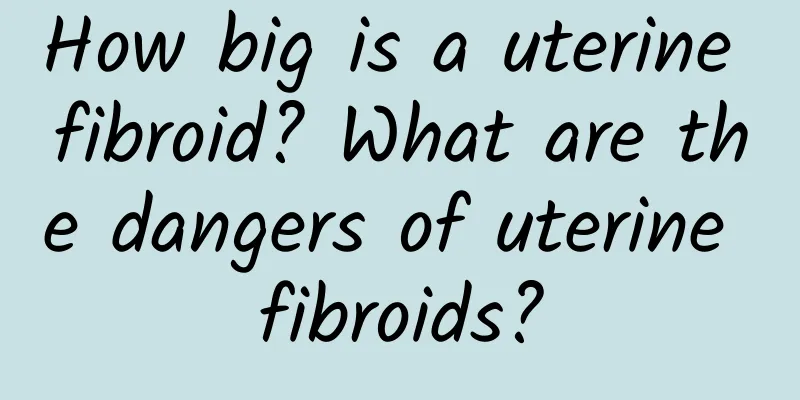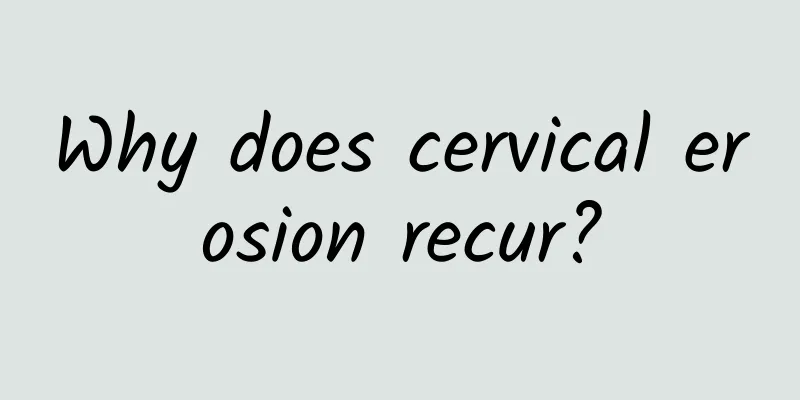How big is a uterine fibroid? What are the dangers of uterine fibroids?

|
Women are more likely to have uterine fibroids when they reach middle age. So how serious are uterine fibroids? How much does surgery cost? Let's take a look. Uterine fibroids can affect pregnancy, and about 25%-40% of patients are infertile. This is related to the size and location of the fibroids. For example, uterine horn fibroids can cause the fallopian tubes to twist and deform, affecting sperm or fertilized eggs, and reducing the chance of conception. Not all uterine fibroids require treatment and surgery. Most of them only require follow-up. However, because uterine fibroids can grow, doctors still recommend treatment up to a certain size. So, how serious are uterine fibroids? When fibroids grow too fast or after menopause, fibroids not only do not shrink, but grow larger. Generally speaking, fibroids that are more than 5.0cm are more serious and need to be removed surgically in time. However, the specific treatment plan needs to be determined according to the individual's age, clinical manifestations, and endocrine conditions. Generally speaking, if the size of the fibroid exceeds 3 cm and the blood supply is rich, surgery should be performed as soon as possible. For less serious fibroids, Chinese medicine can be used to treat them and make the fibroids dissipate. Under what circumstances are uterine fibroids serious? 1. Excessive menstrual bleeding Due to uterine fibroids, heavy menstrual flow, and long menstrual cycles, long-term excessive menstrual bleeding can lead to secondary anemia and even anemic heart disease. In severe cases, symptoms such as general fatigue, pale complexion, shortness of breath, and palpitations are common in submucosal uterine fibroids and intramural uterine fibroids. This situation cannot be delayed at will. It is recommended to perform surgery at an appropriate time, otherwise it may be life-threatening. 2. Compression of pelvic organs Compression of the bladder can cause urinary urgency, frequent urination, or even difficulty urinating. Compression of the rectum can cause rectal irritation symptoms or even difficulty defecating. Low-lying fibroids or cervical fibroids or broad ligament fibroids compress the ureter, leading to hydroureteral and renal pelvis. People with pelvic organ compression symptoms do not necessarily have heavy menstrual flow or long menstrual periods. Generally speaking, surgical treatment should be considered once cervical fibroids, broad ligament fibroids, and submucosal fibroids are found. 3. Suspected malignant transformation of tumors The probability of malignant transformation of uterine fibroids is very small, generally less than 1%, and is more common in people who are older, have large fibroids, and grow rapidly, especially when fibroids grow rapidly after menopause or occur after menopause. Although most uterine fibroids shrink after menopause, they cannot be completely taken lightly and should be checked regularly for a period of time. 4. Torsion of the pedicle of a subserous tumor Torsion of the pedicle of a subserous tumor often presents as acute lower abdominal pain. If surgery is not performed in time, the necrotic myoma may be twisted, which may lead to secondary infection, and in severe cases, intestinal adhesions and intestinal obstruction. 5. Infertility is caused by uterine horn fibroids compressing the entrance of the fallopian tubes, hindering pregnancy. In addition, fibroid patients often have ovarian dysfunction, leading to infertility. Uterine fibroids deform the uterus and hinder the implantation of fertilized eggs, but they also affect the proliferation of the endometrium. Even if the embryo is implanted, it is easy to cause miscarriage due to the presence of fibroids. Women with uterine fibroids are infertile, and other examinations are normal. The cause of infertility may be uterine fibroids. If fibroids are suspected to cause infertility, surgery should be performed in time. 6. Adhesion to ovarian tumor Sometimes, uterine fibroids are not easy to distinguish from ovarian tumors, whether by clinical symptoms, physical examination or auxiliary examinations such as ultrasound. When it is impossible to distinguish between uterine fibroids and ovarian tumors, surgery should be performed in time. 7. Some relative indications: The diameter of a single myoma exceeds 5 cm. The uterus of a myoma patient is enlarged beyond 10 weeks of pregnancy. How serious are uterine fibroids? The above is what the editor introduces to you for reference. |
<<: Is it serious to have uterine fibroids? Will uterine fibroids affect pregnancy?
Recommend
What to do if your child is too fat? Troubling issues during development
Why can’t I lose weight? The first thing to consi...
What are the symptoms of cervical hypertrophy?
Cervical hypertrophy is a type of cervicitis, a c...
What are the reactions after using the Xiaomi suppository? Some people may experience some adverse reactions after taking the medicine.
After vaginal administration of the drug using th...
How to treat cervical erosion best? The best treatment for cervical erosion in women
In the past, many women went for gynecological ex...
A significant decrease in menstrual flow may indicate premature ovarian failure
A significant decrease in menstrual flow may indi...
What is the cause of heavy menstrual flow during puberty?
What is the cause of heavy menstrual flow during ...
Patients with ovarian cysts should avoid cyst rupture
The causes of ovarian cysts may be due to environ...
What are the symptoms of premature ovarian failure?
What are the symptoms of premature ovarian failur...
What is the cause of left ovarian cyst?
What is the cause of left ovarian cyst? Left ovar...
[Video version] What should you eat after vaccination for the best protection?
As the number of COVID-19 vaccines donated to Tai...
What is the whole process of medical abortion after pregnancy like? Let's take a look
How does medical abortion work? Understanding the...
Causes of cervical hypertrophy
Cervical hypertrophy is a type of chronic cervici...
What causes irregular menstruation? Can TCM be used to treat abnormal menstrual cycles?
Irregular menstruation is a common gynecological ...
What are the causes of female adnexitis?
Adnexitis is a common disease among many women, s...
What are the early symptoms of cervical erosion?
Cervical erosion is a gynecological disease that ...









